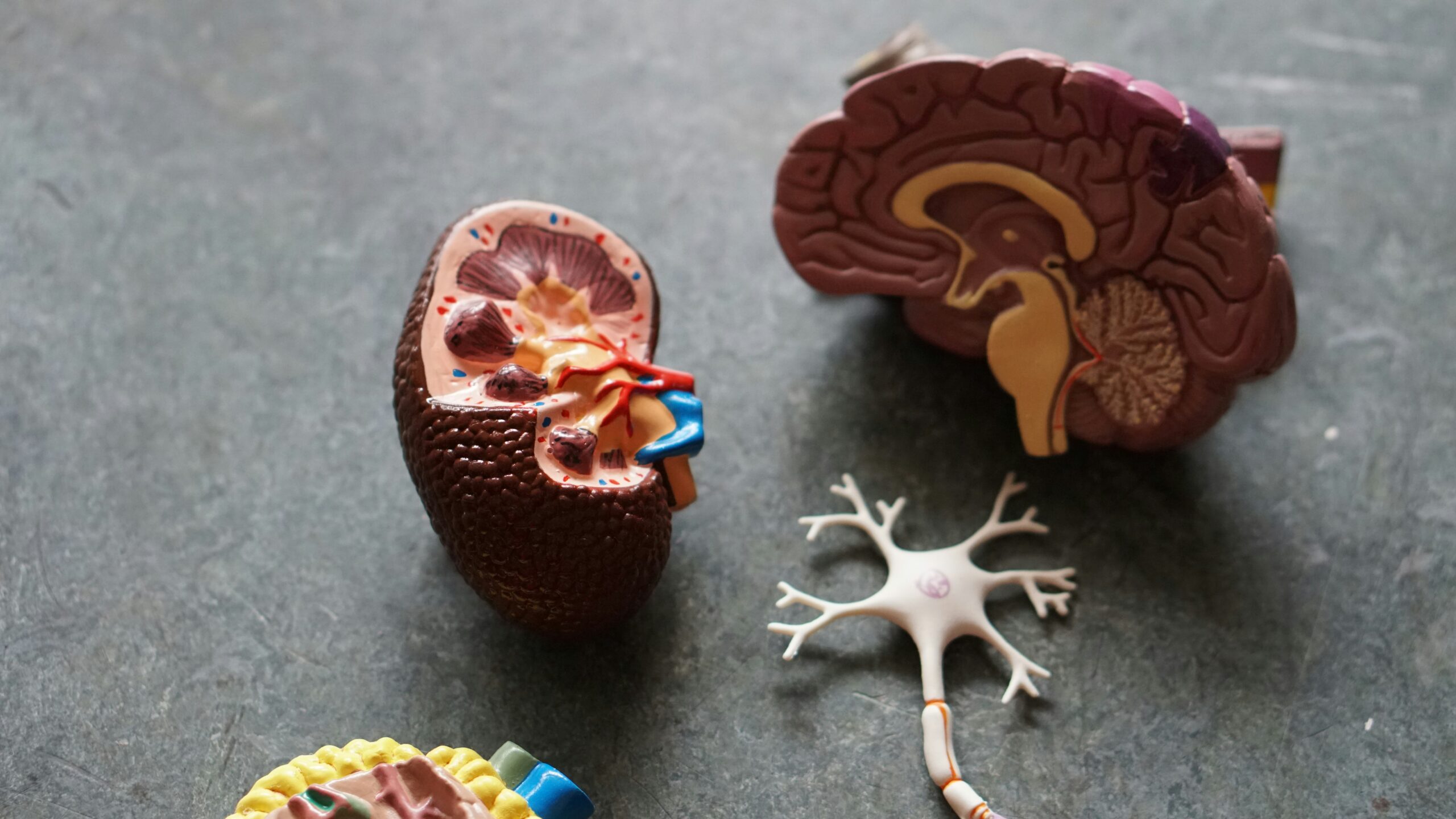Neuralgia, moreover called nerve torment, is a solid throb that feels like cutting or burning and follows the way of a particular nerve. This sort of torment can continuously be there persistently, or it might come up abruptly without caution, like an assault. It can appear in nearly any portion of a person's body but is regularly seen on their face and head; we call it trigeminal neuralgia.
It might also appear within the chest range because it happens after shingles, known as postherpetic neuralgia. The torment from neuralgia is regularly exceptionally solid, as a rule making the standard of living troublesome and decreasing its quality.
That can happen when there's bothering or hurt to a nerve, making the signals in our nervous framework act abnormally. The reason for this framework is to send these signals between our body and brain so we will feel things and move around. In case these pathways are exasperated, we sometimes get solid torment, indeed without obvious harm. The sort of torment in neuralgia can vary, like speedy “electric stun” sentiments or a consistent profound throb. To get neuralgia well, it is imperative to know its different shapes and causes and how it unexpectedly influences individuals.

Diverse sorts of neuralgia don't show up with the same recurrence. For illustration, trigeminal neuralgia is very uncommon and happens to around 12 out of 100,000 individuals each year. This situation happens more often in ladies![]() and usually starts when they are middle-aged or more seasoned. Be that as it may, postherpetic neuralgia is regularly seen in more seasoned individuals and can be a normal problem after having shingles. It usually impacts individuals 60 years or older, with its chances expanding as they get more seasoned.
and usually starts when they are middle-aged or more seasoned. Be that as it may, postherpetic neuralgia is regularly seen in more seasoned individuals and can be a normal problem after having shingles. It usually impacts individuals 60 years or older, with its chances expanding as they get more seasoned.
In short, it is not easy to discover the precise number of times neuralgia happens with diverse conditions. A few sorts might happen less regularly but still cause much torment and distress, like glossopharyngeal neuralgia or occipital neuralgia![]() . The rates contrast among various groups and ages, showing that we got to get it more around why this ailment happens and how it works.
. The rates contrast among various groups and ages, showing that we got to get it more around why this ailment happens and how it works.
Neuralgia can happen for numerous distinctive reasons, and one of them is coordinated harm or damage to the nerve. Occasions like mishaps where bones break or are cut amid surgery strategies might harm nerves and cause long-lasting torment (chronic). Contaminations like shingles, caused by the varicella-zoster infection![]() , now and then lead to postherpetic neuralgia. That happens when the nerve remains swollen for a long time, indeed after recuperation from contamination.
, now and then lead to postherpetic neuralgia. That happens when the nerve remains swollen for a long time, indeed after recuperation from contamination.
Sicknesses that affect the total body are too exceptionally significant in neuralgia. For occasion, in case diabetes isn't appropriately overseen for a long time, it might lead to diabetic neuropathy. It happens since modest blood vessels that donate nerves nutrients and oxygen get hurt. When harmed, the nerves don't get what they got to remain solid. Illnesses like different sclerosis can cause neuralgia by harming the myelin sheath, a defensive layer around the nerves. This protection helps keep them secure from harm.
In some cases, neuralgia occurs when nerves are pressed. For example, trigeminal neuralgia can be common because blood vessels can press on the trigeminal nerve near where it clears out the brainstem. Torment can happen when a tumor or sore presses on nerves. Too, hurtful substances we might touch—if gulped or shown within the environment close to us—can be terrible for nerves and cause neuralgia as well.
The foremost self-evident indication of neuralgia is extreme torment. Individuals commonly depict this torment as exceptionally sharp, like being wounded with a cut or burnt by fire; in some cases, they compare it to an electric stun. This kind of extraordinary distress can happen abruptly in bursts known as paroxysms and may endure for anywhere between a couple of seconds and various minutes. The beginning of these scenes may be activated by little activities, such as touching skin gently, chewing something, or indeed feeling cold around oneself.
The area of neuralgia is decided by the nerve that's influenced. For example, if somebody has trigeminal neuralgia, they will experience severe torment in their face, more often than not on one side. In other circumstances, such as occipital neuralgia, it causes solid torment within the back of the head and neck. The torment can be found along the nerve's route, which makes a difference in a conclusion.
In addition to the harmful feeling, there may be other indications like a shivering sensation, need of feeling, or shortcoming within the influenced put. These signs may appear earlier than when torment begins and are a caution for an up-and-coming assault. If neuralgia is connected with another well-being issue, such as diabetes, more body signs might rise, as well. They might feel exceptionally tired continually, lose weight indeed if they are not endeavoring to lose it, or have trouble seeing things.

The impact of neuralgia isn't as it were about physical torment; it moreover causes genuine mental and social issues. The proceeding and shocking torments can bring worries, stress, and pity. Patients might create fear towards exercises that might cause torment, which comes about when they maintain a strategic distance from social interactions; this leads to diminishing quality of life. At times, the concentration of torment can render individuals unfit to perform exercises. It may prevent them from carrying out standard obligations or holding onto their business.
Besides, if the root cause of neuralgia isn't well overseen, there may be a possibility of maintained harm to nerves. That might result in diligent torment and progressing issues with the faculties. Postherpetic neuralgia is one illustration where the pain can last indeed after the initial haste has vanished.
At times, it keeps going over a long time and impacts rest and general well-being altogether. The diligent torment from neuralgia (nerve harm) may lead individuals to use too many torment solutions, counting powerful ones such as opioids.
Neuralgia can be analyzed through a systematic approach. First, the specialist will ask about the patient's foundation and conduct a mindful physical checkup. They will look for normal discomfort signs, like amazingly sharp or shooting pains that adjust with particular nerve pathways. A total neurological appraisal helps in measuring the victory of tangible and engine capacities and distinguishing issues or damage to nerves.
Imaging tests are exceptionally significant in finding auxiliary issues that may be the root of neuralgia. For instance, an MRI or CT check may uncover tumors, issues with blood vessels, or injuries from conditions such as different sclerosis, which seem to apply weight to nerves and influence them physically. When it comes to trigeminal neuralgia, an MRI is particularly valuable for distinguishing whether there's a nearness of blood vessels squeezing onto the nerve.
Electrodiagnostic tests, especially electromyography (EMG) and nerve conduction considerations (NCS) are profitable strategies for distinguishing well-being challenges. EMG looks at the electrical signals in muscles to decide if there's any hurt or issues with how nerves work. NCS surveys the pace of electrical driving forces traveling through a nerve, helping identify the off chance that there's any weight or hurt on nerves. These examinations are amazingly valuable in separating neuralgia from other sorts of neuropathic torment.
Blood tests help distinguish proof of real issues causing or compounding neuralgia. For instance, if one's blood sugar levels are lifted, this might show that one has diabetes. Moreover, disclosing particular antibodies through a blood test might uncover the nearness of immune system infections such as different sclerosis or lupus (Diseases and Conditions That Cause Neuralgia). Moreover, signs of irritation or contamination within the circulation system point toward a viral or bacterial root of the neuralgia.
At times, specialists perform a lumbar cut, also known as a spinal tap, to examine the cerebrospinal fluid (CSF). This test can help determine whether somebody has issues like multiple sclerosis, diseases, or other infections causing irritation in their nervous framework. They note interesting things when they examine the CSF, such as cell counts or protein levels. They may discover certain antibodies that appear, and there may well be neurological issues.
Treating neuralgia concentrates on diminishing torment and getting to the root cause. The treatment method depends on the severity of the symptoms, which nerve is influenced, and what condition causes them.
Medication is regularly the favored alternative for treating neuralgia. Antidepressants, particularly tricyclic ones, can also help with nerve torment administration. That's because they change the way torment messages travel through the brain.
For severe torment, specialists may endorse nonsteroidal anti-inflammatory drugs (NSAIDs) or opioids. In any case, these drugs are regularly utilized as they were for a brief period due to their dangers of habit and destructive impacts. There are too many creams for the skin, like lidocaine patches and capsaicin creams. These offer assistance to reduce torment in certain zones of the body and are compelling for issues such as postherpetic neuralgia, which is a torment that happens after somebody has shingles.
Nerve blocks and infusions![]() offer assistance for a brief time to ease nerve torment. In these strategies, specialists put desensitizing substances or steroids close to the troublesome nerve. That helps to reduce swelling and halt torment messages. They work amazingly well for occipital or trigeminal neuralgia, where torment remains in one zone. Radiofrequency removal could be a strategy that utilizes warm to hurt nerve strands and may deliver amplified torment alleviation.
offer assistance for a brief time to ease nerve torment. In these strategies, specialists put desensitizing substances or steroids close to the troublesome nerve. That helps to reduce swelling and halt torment messages. They work amazingly well for occipital or trigeminal neuralgia, where torment remains in one zone. Radiofrequency removal could be a strategy that utilizes warm to hurt nerve strands and may deliver amplified torment alleviation.
For people who don't get way better with straightforward treatments, sometimes surgery should be done. A common surgery for trigeminal neuralgia, known as microvascular decompression, is regularly utilized in these cases. In this strategy, we move a blood vessel absent from the trigeminal nerve to reduce its weight and torment. Rhizotomy, which is related to harming nerve filaments to halt torment messages, can happen by different strategies. A few strategies incorporate utilizing radio waves (radiofrequency ablation) or chemicals (chemical infusions).
Physical treatment and recuperation are fundamental when dealing with neuralgia. This torment regularly ties to issues with muscles and bones. Hones like extending workouts, strengthening programs, and hands-on treatments can reduce side effects and boost aptitudes for development. Occupational treatment also makes a difference by helping individuals bargain with their circumstances better.

The viewpoint for neuralgia changes a parcel based on why it is happening, which nerve is harmed, and how the entity reacts to medication. Frequently, neuralgia can be controlled well with pharmaceuticals and changes in life together. It means less torment for an individual and moving forward with the quality of life. If somebody has something like postherpetic neuralgia, the torment regularly gets to be less with time. Still, it can remain for long periods in a few individuals, particularly more seasoned ones.
However, neuralgia can become more severe with infections like multiple sclerosis or nerve damage from diabetes. It can last for a long time and be difficult to handle. Although surgery can provide long-lasting alleviation to a few individuals, it comes with dangers. It is regularly considered after all other medications have been attempted. The issue might come back, particularly if the issue must be addressed accurately.